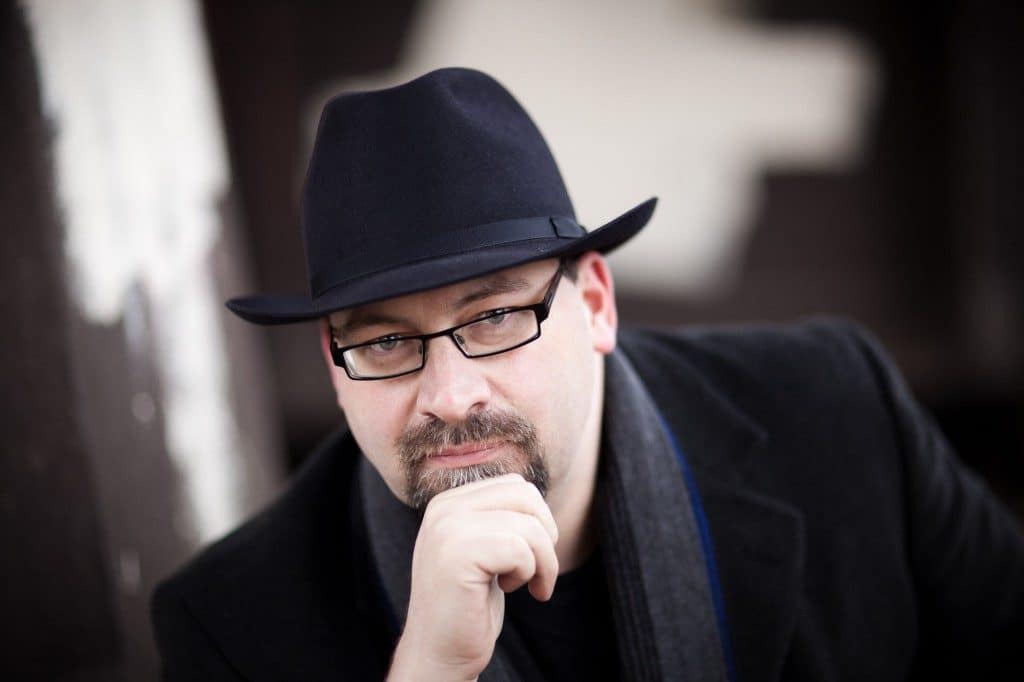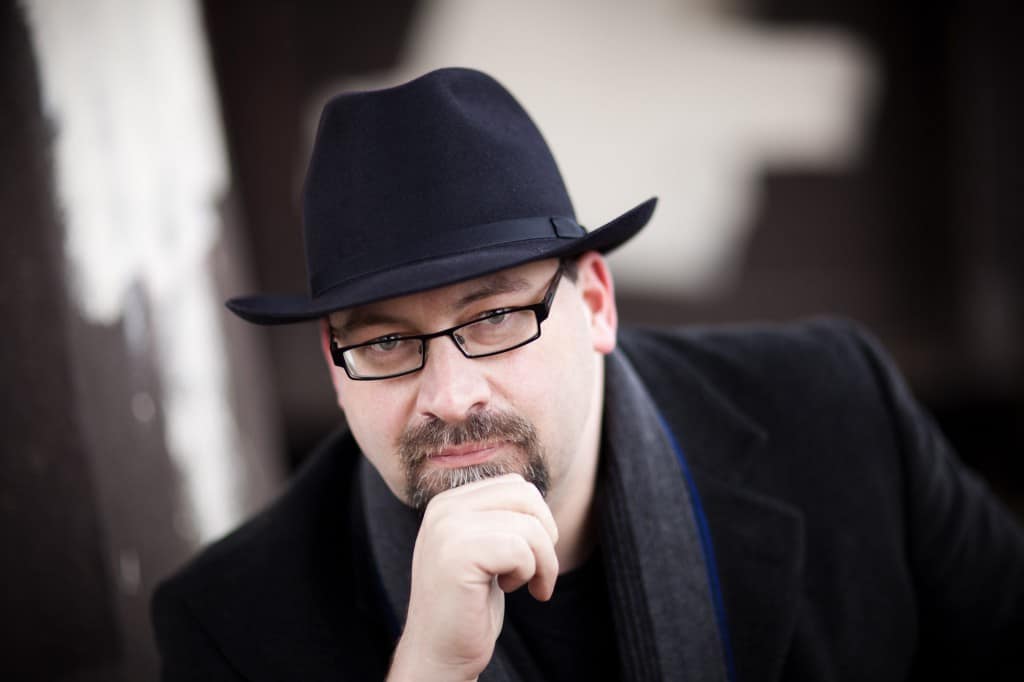An extended feature interview in the current issue of the Journal of the UK Sibelius Society from Society President, Edward Clark.Full issue available here
 The Power and the Glory
The Power and the Glory
Review by Edward Clark
Maestro Kenneth Woods has reenergised the English Symphony Orchestra (ESO) to a point where it is one of the premiere orchestras in the central/western side of our country. Evidence of his superior planning and execution of concerts is the arrival for this concert of Stephen Bryant, the esteemed leader of the BBC Symphony Orchestra, as Guest Leader. It was held on Sunday 7 October at Hereford Shirehall, a splendid venue for concerts that don’t need vast resources.
The orchestra is a factory for new music with its commissions now appearing frequently in its programmes; an ambitious series of new symphonies is underway and the latest Artist in Association is David Matthews, himself a noted symphonist whose Ninth Symphony received its premiere recently after being commissioned by Woods and his orchestra. Matthews knows a thing or two about the symphonic tradition and this concert was devised around single movement symphonies at the opposite ends of the Romantic era; first the Fourth Symphony by Robert Schumann, followed nearly one hundred years later by the Seventh Symphony of Sibelius. Sir Colin Davis once told me this work represented the driving in of the coffin nails of Romantic music.
Woods gave secure and often impassioned accounts of both works. The Schumann achieves its status mainly due to linking the third and fourth movements. Otherwise the differentiation between the four-movement structure remains close to the model of early/middle period Beethoven. It must have still come as a shock to early listeners though and Woods way with the music permitted the closeness of the material to be fully established. The playing was keen and enthusiastic for demonstrating the latent power of the various musical impulses that Schumann imbues so craftily into his work. The conclusion was suitably uplifting, showing how innovative the whole process had been.
The symphony as an art form went through various phases in between this work and that by Sibelius. German Romanticism, typified by the thoroughness of Brahms’ mind, complimented the many sided National Romantic movements, all contributing to the rich panoply of musical expression. Sibelius, himself, was an early adherent to this style of writing in his first two symphonies before breaking away in the first decade of the 20th century from the fully emerged Mahlerian expansionism where each symphony was to be a world, embracing everything. The climax of Sibelius’s contribution to a reformed and reenergised symphonic style came in 1924 with his final symphony
the Seventh. Here he condensed and compressed all his material into barely twenty minutes of the most concentrated way, using a simple rising scale on the strings to create the organic means of allowing a diatonic contrast and tension in the music to become a work of great power and glory; a fitting end to his symphonic quest for honesty and a lack of flamboyance, to which he had eluded in his remark after the premiere of his Fourth Symphony: “Nothing, absolutely nothing, of the circus about it”.
This work is complex and strains our comprehension of what processes are actually being deployed by Sibelius when he writes a single movement work with the title of symphony. Many conductors fail to offer insights into the mind set of the symphonic genius before the audience. Woods had clearly done his homework and presented this mighty work in a convincing, ever evolving way that reached its conclusion with a shrug of a final rising chord on the full orchestra. Such words fail to describe the pain and suffering contained in the music and Woods never deviated nor avoided this side to Sibelius’s musical character. The players were consistent in keeping their concentration throughout and the ever-rising turbulence, the offspring of an early solo trombone motive, here played perfectly by Julian Turner, was both deeply effecting and also disturbing. No wonder the composer needed copious amounts of whisky to keep him going in his exploration of the outer reaches of symphonic thought. Numerous attempts at emulating the single movement symphony have been made by composers, none of them scaling the heights of Sibelius’s Seventh, an epoch changing work if ever there is one.
This came as the climax to an exhilarating concert, begun with the Schumann symphony, before embracing one of his close contemporaries, Liszt with his rarely performed Totentanz (Dance of Death) for piano and orchestra, the soloist being the extraordinarily talented, though still young, Roman Kosyakov, of Russian parentage. The demand made by the supreme pianist of his age are huge but were met by stunning virtuosity; he dazzled the audience with his cascade of notes which open the work before being allowed to display an outpouring of pianistic fireworks, the like of which the world had never heard before nor hardly since. The interludes of calm interspersed throughout the work were idylls of poetic feeling.
An interval was needed to move our senses from such resounding sounds to the altogether quieter atmosphere of The Swan of Tuonela, by Sibelius. But it was Liszt, through his sequence of symphonic poems, who inspired the young Sibelius to change his mind over writing an opera in Wagnerian style to modifying his musical material required for a set of four symphonic poems, The Lemminkäinen Suite; The Swan of Tuonela was one of these. Woods settled his orchestra down superbly and we entered a hushed world of sonorous strings accompanying a lonely cor anglais solo, here played with poise and great atmosphere by Graeme Adams. It was an early masterpiece in the Sibelius canon and Woods’ direction allowed us to appreciate its extraordinary individuality in using sparse orchestral resources for maximum emotional effect.

